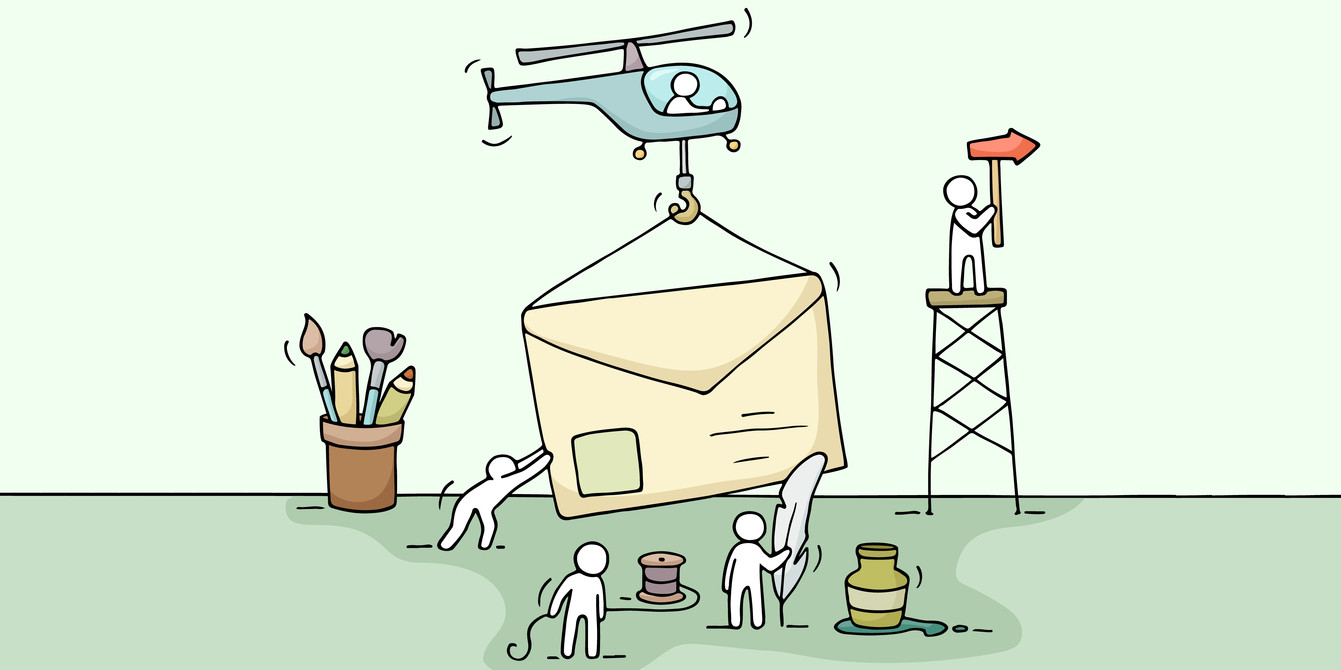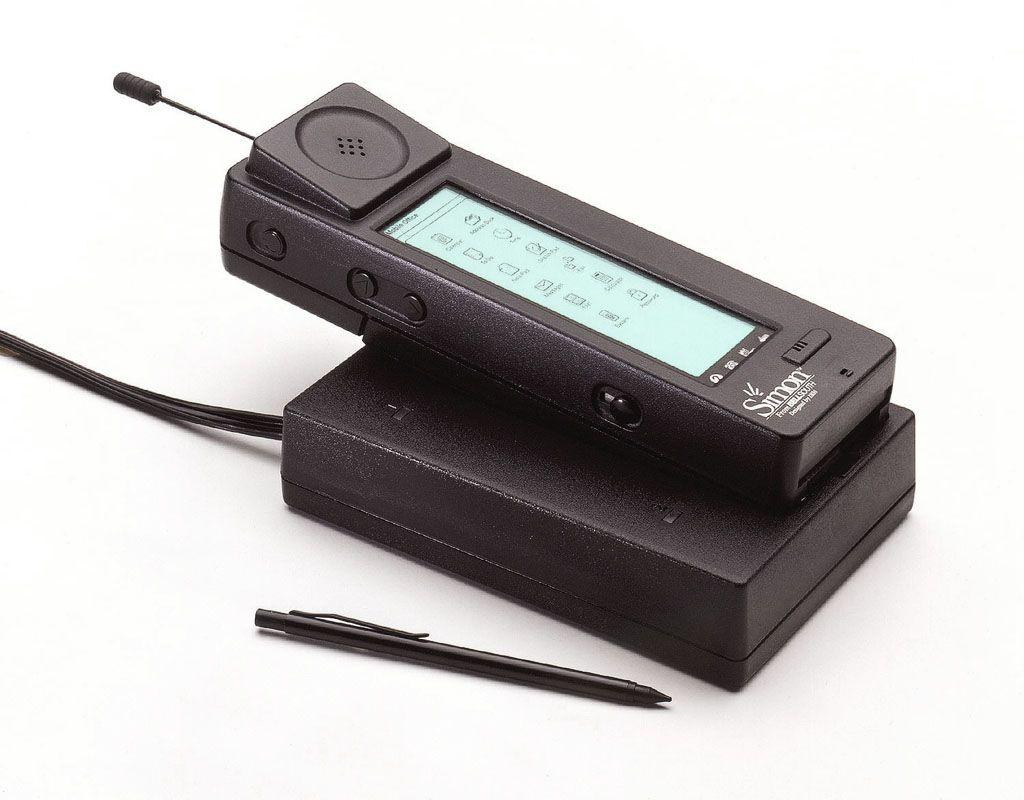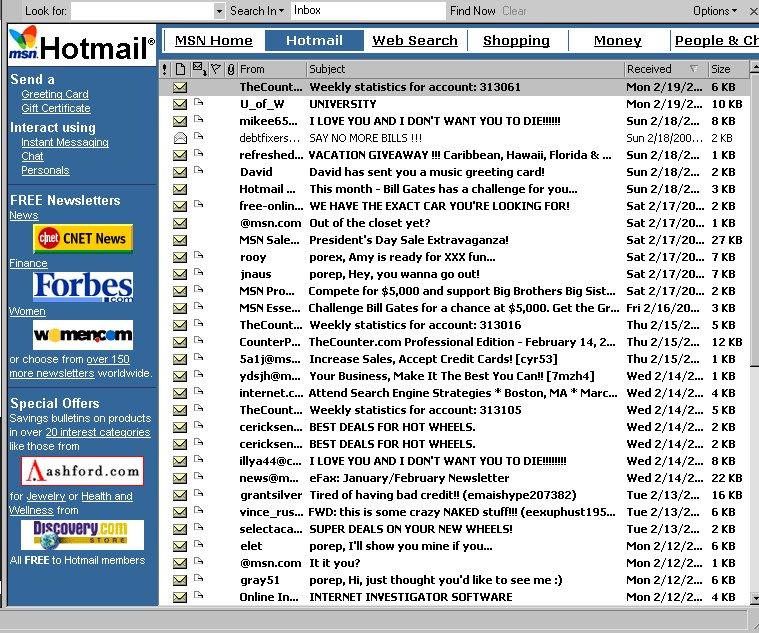The evolution of email marketing: from QWERTYUIOP to GDPR

It has been 47 years since American engineer Ray Tomlinson sent the world's first email. He came up with the idea of using the @ ( at-sign ) symbol in addresses, which we today, without hesitation, associate with whole technology and even e-mail culture. It is unlikely that he then guessed what it would lead to and certainly did not think that after forty years he would enter the Internet Hall of Fame as one of the main innovators of the era.
Over the past decades, the email from the method of communication has become one of the main forms of direct marketing. This method provides tremendous opportunities for tracking and responding to consumer behavior, helping to promote and sell products and services to hundreds of thousands of marketers around the world.
')
The Sendbox service team from Mail.ru has studied how email marketing has evolved, going from ruthless spam to a sophisticated tool for interacting with the audience.
1969 The US Department of Defense initiated the first development of computer networks, from which the history of the Internet began . In 1969, students from the University of California connected two computers through Arpanet, the first computer network. The students sent a code word to each other through a 5 meter cable. It is believed that this was the first transfer of information over a computer network.
1971 A graduate of the Massachusetts Institute of Technology (MIT) Raymond Tomlinson sent the first email ever . According to Tomlinson himself, he does not remember the contents of this letter.

“ Most likely, the first message was something in the spirit of QWERTYUIOP, ” he later said. Since October 2, the world annually celebrates Email Day .
1971 The first program was created to receive and send emails . It was written by Larry Roberts, an Arpanet employee. A year later, the familiar @ sign appeared in the email addresses.
1976 Queen of England Elizabeth II sends the first email, ahead of other heads of state.

1978 year . Gary Tuerk, who was later called “the father of spam,” sent out 400 letters advertising the DEC computer to users of the Arpanet network. In the letters, Gary told about the new device and invited to the exhibition in Los Angeles for the presentation of the computer. The first advertising newsletter in the history brought the author a profit of $ 13 million.
1986 For the first time the word “spam” was used : this is how intrusive advertising messages were sent, which were sent by e-mail. The name came from canned meat, which at that time was actively advertised through all possible channels. The obsessive melody that glorified SPAM became an object of ridicule, and the individual Monty Python sketch was even devoted to the omnipresence of canned food.
1988 year . There was the first version of Microsoft Mail on the Mac OS. Users messaged using the AppleTalk network. In 1991, the second version was launched for other platforms, including DOS and Windows. It served as the basis for the subsequent Microsoft mail systems - Outlook and Exchange.
1991 Sent the first email from space . He was sent by the crew of the STS-43 Atlantis in 1991. The astronauts used the latest model of the time on AppleLink on Macintosh Portable to send the following message: “Hello, Earth! You are welcomed by the STS-43 crew. This is the first AppleLink from space. It's cool here, it's a pity you are not around ... We send cryo and RCS! Astalavista, baby ... I'll be back. "
1992 Microsoft has released the first version of the mail client Outlook . Three versions were released simultaneously: Outlook for MS-DOS, Outlook for Windows 3.1x, Outlook for Macintosh. The main competitor of the application from Microsoft is The Bat! Chisinau-based company Ritlabs, SRL , was released five years later - in March 1997. Later, other mail developers released their email clients. So there was Mozilla Thunderbird, Opera Mail . But none of them reached the level of popularity of Outlook and The Bat!
1994 year . IBM Simon released - the first phone that had access to e-mail on the mobile Internet . Thus, electronic mailings received additional opportunities to reach the addressee.

1994 year . A presidential decree was issued on the protection of consumers from unfair advertising , which initiated the regulation of advertising in our country. In particular, restrictions were imposed on advertising of banking, financial, insurance and investment services, but the distribution of advertising through the Internet was not regulated.
1995 year . A federal law was passed, which already partially affected the distribution of advertising through the Internet . For example, a legal definition of the term “advertisement” was given, to which the phrase “distributed in any form, by any means” was applied. All those who placed and distributed advertising, including providing or using "communication channels", were considered advertising distributors. So, general restrictions on advertising came to the Internet and e-mail: accuracy and ethical behavior, restrictions on advertising of alcohol, tobacco, drugs, financial services, etc.
1996 The first free mail service Hotmail appeared . Thanks to him, the owners of e-mail has become much more, which means that the potential audience of advertising mailings has significantly expanded.

1997 A year after the launch of Hotmail, Yahoo buys mail service RocketMail from the company Four11, and on its basis launches the service Yahoo Mail .
1998 A free mail service Mail.ru and a thematic Subscribe.ru mailing service have been launched in RuNet . Both services set standards in their respective industries. At the same time in the United States updated the provisions of the Data Protection Act , so that in all marketing mailings there was an opportunity to refuse to receive them.
2000 The infamous "Center for spoken English" was created , which two years later thundered to the whole country, thanks to the so-called "spam case". The company sent out millions of advertising letters every day with the telephone numbers of its center. Later spam mailing became the object of attention of the Ministry of Antimonopoly Policy.
2000 AOL started broadcasting feedback from users to some postal services, and soon, in conjunction with Hotmail and Yahoo, presented schemes for receiving feedback from recipients. So marketers were able to find out what people think about their letters, and use spam complaints as a metric . Later, Internet providers introduced methods to protect customers from "unwanted" emails, and most of the spam stopped being delivered to the recipient.
2003 The Can Spam Law appeared in the United States, which first settled commercial emails. In the same year, Europe passed a law on the Privacy and Electronic Communications Regulations, which defined the rules for allowing marketing mailings.
2004 The Sender Policy Framework (SPF) framework has appeared , which allowed to verify the authenticity of the sender and prevented spam by using control of the senders' IP addresses.
2007 Exit iPhone - the first Apple smartphone with the ability to view mail from a mobile. Up to this point, email support by user smartphones was usually limited. At the same time, owners of BlackBerry business smartphones from RIM got the opportunity to work in e-mail as early as 2003.

2009 The company Return Path reported that almost 30% of commercial letters sent do not reach mailboxes. In the same year, Merkle reported that low relevance was the main reason users delete such letters without reading. And in this they were helped in every way by providers and creators of free mail services. In the late 2000s, Internet service providers also introduced methods to protect customers from "unwanted" emails. As a result of these actions, the spam mailing gradually replaced full-fledged email marketing : marketers realized that it was necessary to maintain the reputation of the mailing lists, otherwise users would blacklist them or simply poison them into the basket. Letters have become timely and relevant for recipients.
2012 40% of marketing emails now open on mobile devices . This was facilitated by the development of mobile Internet - access to the network can now be obtained at any time almost anywhere. As a result, marketers began to pay special attention to how their letters are displayed on a small screen.
2012 The case of Michael Persod: the suspect from 2012 to 2015 used several IP addresses and domains to send spam on behalf of Californian company Impact Media LLC, posing as Michael Prescott, Michael Pearson and Jeff Martinez. The fraudster offered various goods and services, receiving commissions from sellers for successful transactions . Retribution overtook this California resident in 2016, when he was arrested by the FBI in his own home. A federal judge ordered Persis to pay $ 490,000 in compensation and more than $ 54,000 for moral damage.
2013 Dropbox acquired Mailbox, a promising start-up that seemed to forever change how people use e-mail thanks to the original interface and the unusual management at that time through swipes. Two years later, the project was closed - as it turned out, at that time, users were not accustomed to svaypam and were not ready to change their usual mail programs.
2014 Closing another startup. At this time, the hopes of the developers did not meet the Outbox. It was assumed that for only $ 5 per month, special people would digitize all your offline mail and send it to you over the network . The public took this unusual idea with great care and did not receive development.
2018 In Europe, the General Data Protection Regulations (GDPR) came into force . The European Union regulation was designed to strengthen the protection of personal data of citizens of EU countries. Responsibility of companies that work with such data has increased significantly, and violation of the regulations threatens with heavy fines. This measure also helped streamline email marketing and put it on a more civilized track.
Conclusion
Email is one of the most effective and convenient means of communication. This technology, in spite of its age, was not outdated, but evolved into a useful and sometimes indispensable for users and interesting marketing tool. Both instant messengers and social networks significantly assist marketers in achieving their goals, but Email remains the leader in terms of consuming brand information and reliable communication. It is unlikely that this will change in the next decade, because postal services are also evolving: new technologies are emerging, new ones are coming up with new features that in future will help email to remain a competitive means of communication.
Finally, some interesting facts that only confirm the above:
- About 250 billion letters are sent every day. It is believed that about 60% of the letters in the texts have errors and typos.
- According to Kaspersky Lab, in 2017, almost 57% of the emails sent were spam.
- Every day, the average office employee receives 121 letters and sends about 40.
- 90% of users read mail from a smartphone. At the same time, smart watches are increasingly used to read letters.
- The average email user checks it about 15 times a day.
- 26% of users check email before getting out of bed, 69% while watching TV, 43% read letters in the bathroom, 32% while eating, 0% while reading Habr.
Source: https://habr.com/ru/post/447730/
All Articles